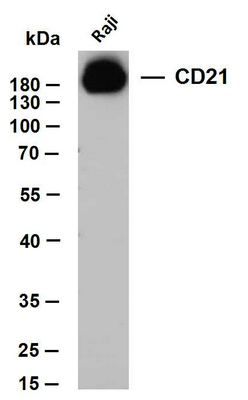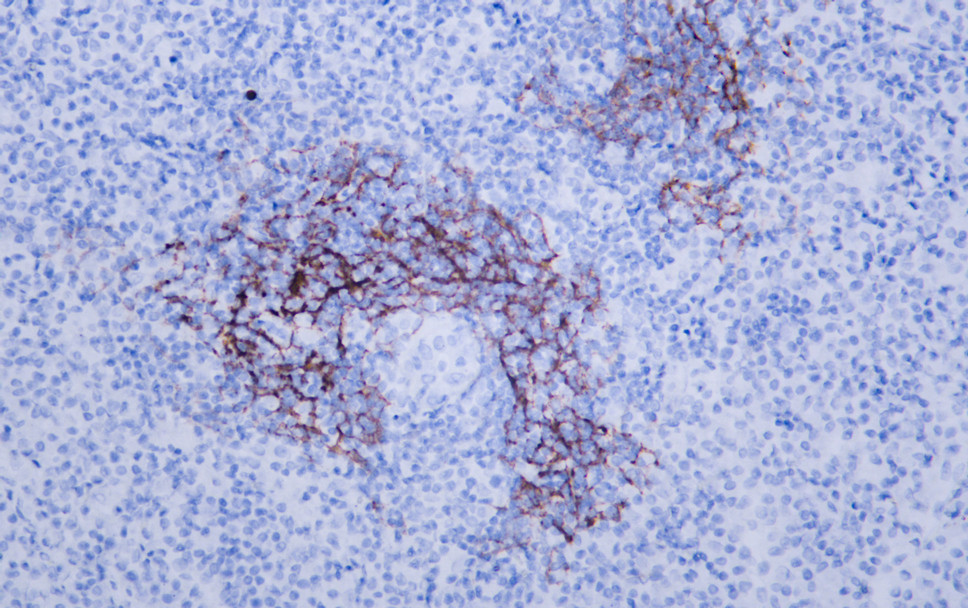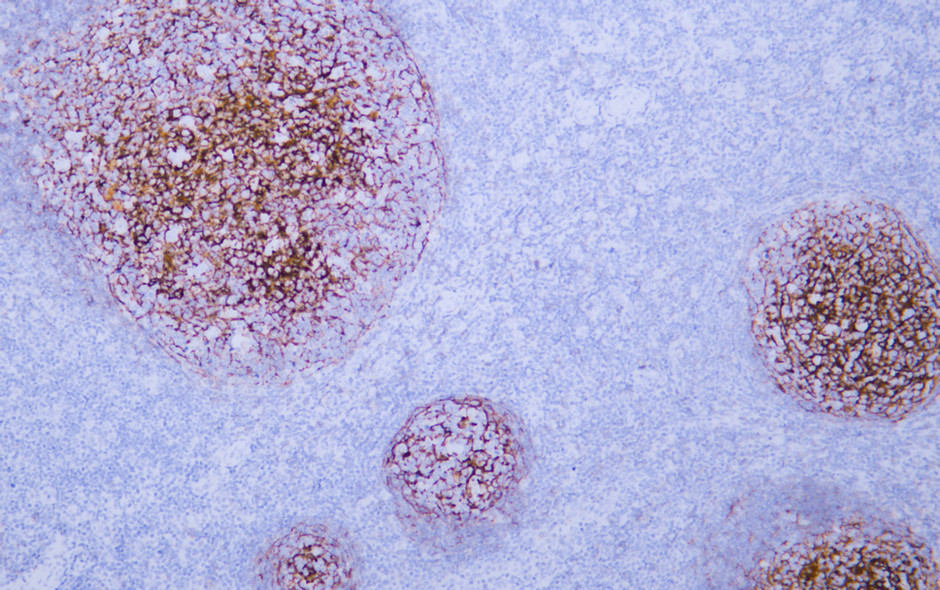CD21 (ABT-CD21) mouse mAb
- Catalog No.:YM4589
- Applications:IHC;WB;IF;ELISA
- Reactivity:Human;
- Target:
- CD21
- Fields:
- >>Complement and coagulation cascades;>>Hematopoietic cell lineage;>>B cell receptor signaling pathway;>>Epstein-Barr virus infection
- Gene Name:
- CR2 C3DR
- Protein Name:
- Complement receptor type 2 (Cr2) (Complement C3d receptor) (Epstein-Barr virus receptor) (EBV receptor) (CD antigen CD21)
- Human Gene Id:
- 1380
- Human Swiss Prot No:
- P20023
- Immunogen:
- Synthesized peptide derived from human CD21 AA range: 400-500
- Specificity:
- The antibody can specifically recognize human CD21 protein.
- Formulation:
- PBS, 50% glycerol, 0.05% Proclin 300, 0.05%BSA
- Source:
- Mouse, Monoclonal/IgG1, kappa
- Dilution:
- IHC 1:200-1000. WB 1:500-2000. IF 1:100-500. ELISA 1:1000-5000
- Purification:
- Protein G
- Storage Stability:
- -15°C to -25°C/1 year(Do not lower than -25°C)
- Other Name:
- C3DR;CD 21;CD21;Complement C3d receptor 2;Complement C3d receptor;Complement component (3d/Epstein Barr virus) receptor 2;Complement receptor type 2;CR;Cr2;CR2_HUMAN;CVID7;EBV receptor;EBV-R;Epstein Barr virus receptor;Epstein-Barr virus receptor;EVBR;SLEB9
- Molecular Weight(Da):
- 113kD
- Observed Band(KD):
- 160kD
- Background:
- CD21, also known as type 2 complement receptor, is an important marker of B lymphocytes and EB virus receptor. It is a member of the complement activation regulator family. CD21 is mainly distributed in mature B cells, dendritic cells in lymphoid follicles and some T cells. It can promote the proliferation of B cells, participate in immune memory and mediate the transformation of EBV into B cells. It is mainly used for the diagnosis of follicular dendritic cell tumor and the study of immune complement activation regulation.
- Function:
- disease:Genetic variations in CR2 are associated with susceptibility to systemic lupus erythematosus type 9 (SLEB9) [MIM:610927]. Systemic lupus erythematosus (SLE) is a chronic autoimmune disease with a complex genetic basis. SLE is an inflammatory, and often febrile multisystemic disorder of connective tissue characterized principally by involvement of the skin, joints, kidneys, and serosal membranes. It is thought to represent a failure of the regulatory mechanisms of the autoimmune system.,function:Receptor for complement C3Dd, for the Epstein-Barr virus on human B-cells and T-cells and for HNRPU. Participates in B lymphocytes activation.,similarity:Belongs to the receptors of complement activation (RCA) family.,similarity:Contains 15 Sushi (CCP/SCR) domains.,tissue specificity:Mature B-lymphocytes, T-lymphocytes, pharyngeal epithelial cells, astrocytes and follicular dendritic cells
- Subcellular Location:
- Membranous
- Expression:
- Mature B-lymphocytes, T-lymphocytes, pharyngeal epithelial cells, astrocytes and follicular dendritic cells of the spleen.
- June 19-2018
- WESTERN IMMUNOBLOTTING PROTOCOL
- June 19-2018
- IMMUNOHISTOCHEMISTRY-PARAFFIN PROTOCOL
- June 19-2018
- IMMUNOFLUORESCENCE PROTOCOL
- September 08-2020
- FLOW-CYTOMEYRT-PROTOCOL
- May 20-2022
- Cell-Based ELISA│解您多样本WB检测之困扰
- July 13-2018
- CELL-BASED-ELISA-PROTOCOL-FOR-ACETYL-PROTEIN
- July 13-2018
- CELL-BASED-ELISA-PROTOCOL-FOR-PHOSPHO-PROTEIN
- July 13-2018
- Antibody-FAQs
- Products Images

- Whole cell lysates were separated by 10% SDS-PAGE, and the membrane was blotted with anti-CD21(ABT-CD21)antibody. The HRP-conjugated Goat anti-Mouse IgG(H + L) antibody was used to detect the antibody. Lane 1: Raji

- Human diffuse large B-cell lymphoma tissue was stained with Anti-CD21 (ABT-CD21) Antibody

- Human tonsil tissue was stained with anti-CD21(ABT-CD21) antibody.

- Human tonsil tissue was stained with anti-CD21(ABT-CD21) antibody.



